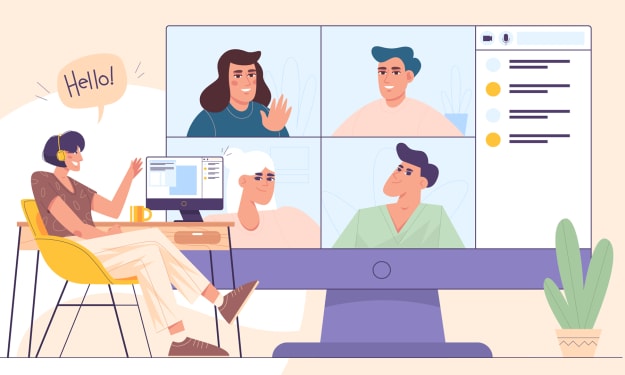External Piles: Causes, Symptoms, Treatment, And Prevention
TheYogaManLab
Introduction: External Piles can be a painful and bothersome condition. Whether you're experiencing them due to straining during bowel movements or as a result of pregnancy, understanding the causes, symptoms, treatment options, and prevention methods can help you manage this condition effectively. In this article, we will explore everything you need to know about external Piles and provide useful tips for prevention. So let's dive in!
Causes of External Piles: External Piles develop when the veins around the anus become inflamed and swollen. Several factors can contribute to their formation, including:
Straining during bowel movements: Frequent straining, often caused by constipation or diarrhea, can put pressure on the blood vessels in the anal area, leading to the development of external Piles.
Prolonged sitting on the toilet: Spending excessive time on the toilet can also contribute to the development of external Piles by putting unnecessary pressure on the tissues surrounding the rectum and anus.
Weakened support tissues: As we age, the supporting tissues in the anal area tend to weaken, making us more prone to developing external Piles.
Pregnancy: The increased pressure on the abdomen during pregnancy can lead to the development of external Piles in pregnant individuals.
Obesity: Carrying excess weight puts additional strain on the veins in the anal area, increasing the risk of Piles.
Heavy lifting: Frequently lifting heavy objects can strain the muscles and blood vessels, leading to the formation of external Piles.
Inadequate fiber intake: A diet low in fiber can contribute to constipation, which in turn increases the likelihood of developing Piles.
Recognizing the Symptoms of External Piles: Identifying the symptoms of external Piles is crucial for timely intervention and management. The severity of symptoms can vary, but some common signs to watch out for include:
Tender, blue-colored lumps near the anus: These lumps may be sensitive to touch and cause discomfort.
Itching and irritation around the anus: External Piles can lead to persistent itching and irritation in the affected area.
Aching or pain, especially while sitting: Individuals with external Piles often experience pain or discomfort, particularly within the first 24 to 48 hours. This discomfort may worsen when sitting for extended periods.
Rectal bleeding: Bleeding during bowel movements, either observed on toilet paper or in the toilet bowl, can indicate the presence of external Piles.
It's essential to consult a healthcare professional if you experience these symptoms to confirm the diagnosis and receive appropriate treatment.
Diagnosis of External Piles: To diagnose external Piles, your doctor will typically inquire about your medical history and conduct a physical examination. During the examination, they will visually inspect the area around your anus to identify the presence of external Piles. In some cases, a digital rectal exam or anoscopy may be performed to assess the internal Piles as well. If rectal bleeding is present, further tests such as sigmoidoscopy or colonoscopy may be recommended to rule out other underlying conditions.
Treatment Options for External Piles: In most cases, external Piles can be managed effectively with home remedies. However, severe cases or persistent symptoms may require medical intervention. Here are some treatment options:
Home Remedies:
Cold compress: Applying a cold compress wrapped in a cloth to the affected area can help reduce swelling and alleviate pain.
Sitz bath: Soaking your bottom in warm water multiple times a day can provide relief. Adding unscented Epsom salts to the water may enhance the soothing effect.
Topical ointments or wipes: Using over -the-counter ointments or soothing wipes containing ingredients like witch hazel and aloe vera can help reduce swelling and pain. However, it's important to note that the effectiveness of these products may vary and more research is needed to establish their efficacy.
OTC creams: Over-the-counter topical medications such as Preparation H can provide relief from symptoms.
Medical Treatments:
Hemorrhoidectomy: In severe cases, where conservative measures fail to alleviate symptoms, a surgical procedure called a hemorrhoidectomy may be recommended. This procedure involves the surgical removal of external Piles using a laser, scalpel, or cautery device. Local anesthesia is typically used during the procedure.
Prescription medications: Healthcare professionals may prescribe topical nitroglycerin ointment, topical nifedipine, or an injection of botulinum toxin (Botox) into the anal sphincter for the treatment of external Piles.
Prevention of External Piles: Prevention is always better than cure. By adopting certain lifestyle modifications and incorporating healthy habits, you can reduce the risk of developing external Piles. Here are some preventive measures you can take:
Avoid straining during bowel movements: Straining puts unnecessary pressure on the blood vessels in the anal area. To prevent straining, avoid sitting on the toilet for prolonged periods and establish regular bowel habits.
Prevent constipation: Follow a high-fiber diet rich in fruits, vegetables, whole grains, and legumes. Adequate fiber intake promotes regular bowel movements and prevents constipation. Additionally, stay hydrated by drinking plenty of water and consider fiber supplements, stool softeners, or laxatives if necessary.
Maintain a healthy weight: Obesity increases the risk of developing Piles. Adopt a balanced diet and engage in regular physical activity to maintain a healthy weight and reduce the strain on your blood vessels.
Avoid heavy lifting: Straining while lifting heavy objects can contribute to the development of external Piles. Practice proper lifting techniques, and if possible, ask for assistance when handling heavy loads.
Seek professional advice if at higher risk: If you are pregnant, have a compromised immune system, or are taking medications that reduce blood clotting, consult a healthcare professional for guidance on managing constipation and preventing Piles.
Outlook for External Piles: External Piles are a common condition that often resolves on its own within a few days or weeks as the body reabsorbs the blood clot within the swollen blood vessels. Most cases can be effectively managed with home remedies and lifestyle modifications. However, if symptoms persist or if you have a severe case of external Piles, medical intervention may be necessary. Surgical procedures such as hemorrhoidectomy can provide long-term relief.
In conclusion, external Piles can be uncomfortable and painful, but with proper understanding of the causes, symptoms, treatment options, and preventive measures, you can effectively manage this condition. By adopting a healthy lifestyle, seeking timely medical advice, and following the recommended treatments, you can alleviate symptoms and prevent the recurrence of external Piles. Remember, it's always important to consult with a healthcare professional for an accurate diagnosis and personalized treatment plan.
Visit Us
Read More From TheYogaManLab
About the Creator
TheYogaManLab
At The Yoga Man Lab, we believe in providing the best quality supplements & medicines that are made in India, 100% natural, ethically sourced






Comments
There are no comments for this story
Be the first to respond and start the conversation.